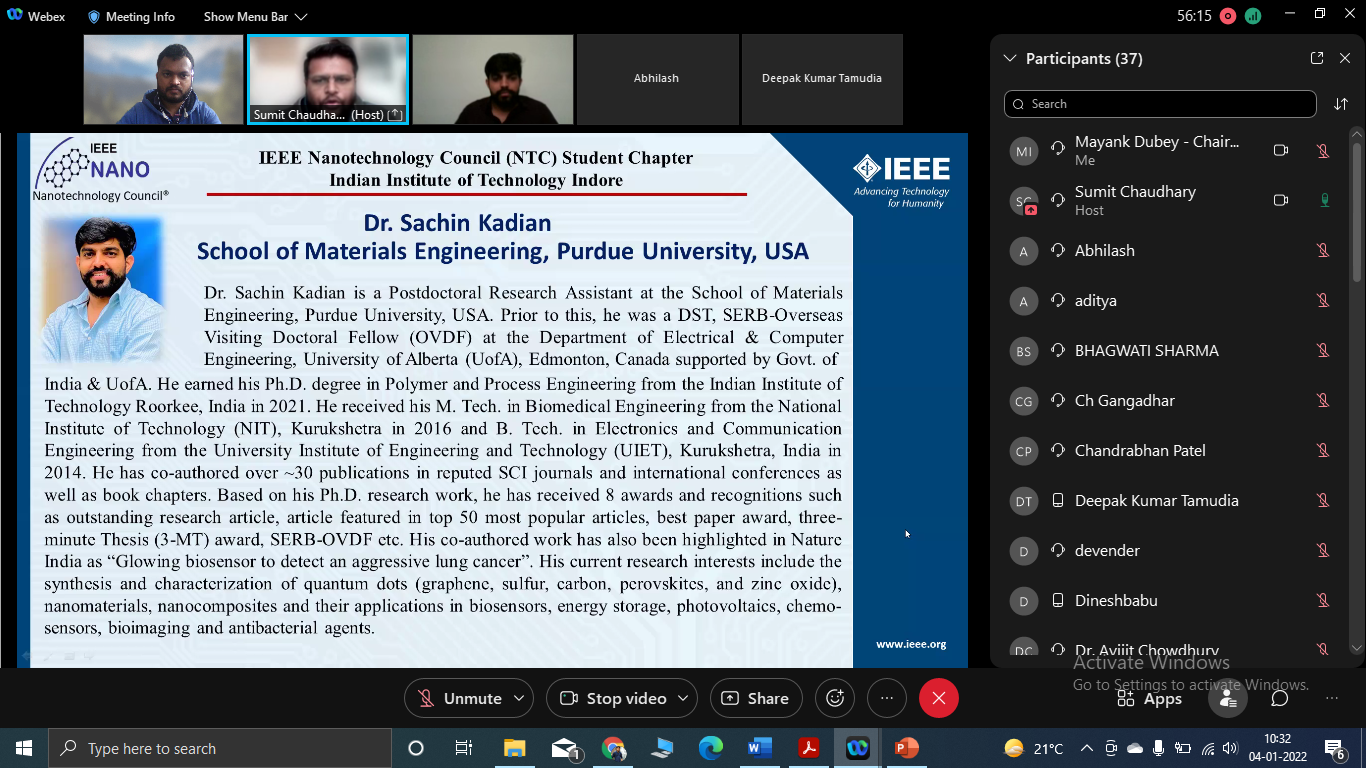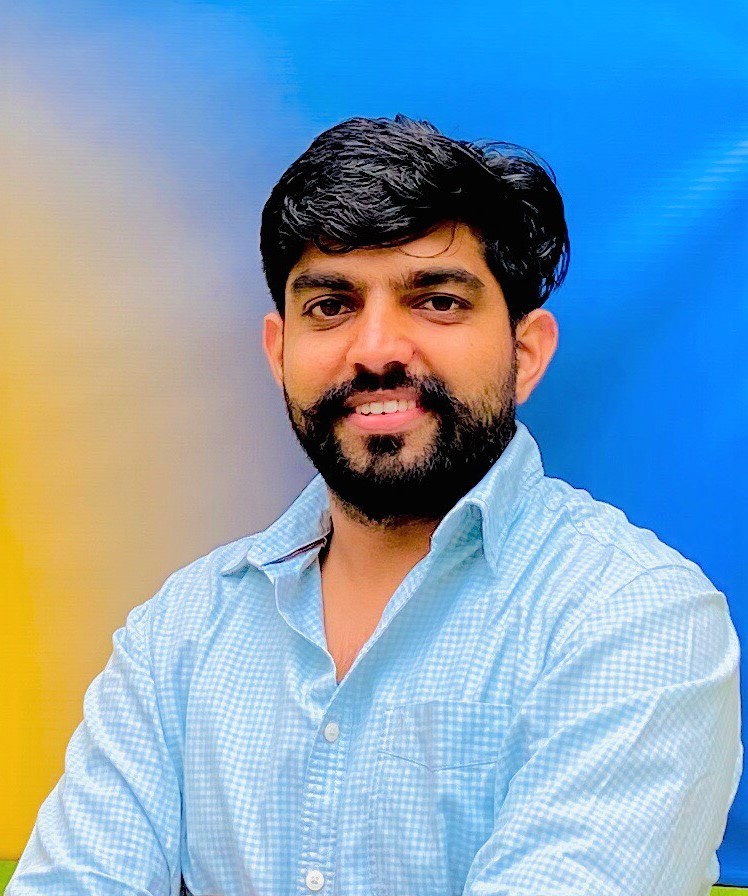Career guidance series expert talk on "Graphene Quantum Dots" by Dr. Sachin Kadian

Speaker: Dr. Sachin Kadian, School of Materials Engineering, Purdue University, USA
Date and Time
Location
Hosts
Registration
-
 Add Event to Calendar
Add Event to Calendar
- Contact Event Host
- Co-sponsored by 1. Pfeiffer vacuum, 2. Jagatek corporation, 3. Rudrakasha Technologies, 4. Excel Instruments, 5. Streamline, 6. Mansha Vacuum Technologies, 7. Optimized Solution
Speakers
 Dr. Sachin Kadian
Dr. Sachin Kadian
Graphene Quantum Dots: An indispensable future material for biomedical and optoelectronics applications
DESCRIPTION OF TALK:
Since the discovery of graphene by Geim and
Novoselov in 2004, its exceptional characteristics
such as high electrical conductivity, good thermal
stability and high mechanical stiffness have made it
an indispensable material for many interesting
applications in several areas. However, the zero-
bandgap, low aqueous solubility and low
absorptivity impede the effective employment of
graphene in many applications. To overcome these
limitations, the structural regulations of graphene
have gained significant attention from the
scientists. They have concluded that if the large
graphene sheet is censored into small fragments, it
exhibits interesting characteristics including (zigzag
and armchair) edge sites, quantum confinement
effects and oxygen enriched functional groups. In
pursuit of this, recently, graphene quantum dots
(GQDs) have emerged as a promising quasi zero-
dimensional material of the graphene family.
Owing to their unique set of characteristics
including bright luminescence, ease of synthesis,
favorable biocompatibility, quantum confinement
effect, excellent aqueous solubility, and tunable
bandgap, GQDs have been applied in several
biomedical and optoelectronics applications.
Additionally, since the synthesis methods of GQDs
avert the use of toxic heavy metals and
sophisticated instruments, they have been
considered to be more promising alternate over the
traditional semiconductor quantum dots. Further,
the ability to tailor the desired physical, chemical,
and optical properties of GQDs with ease during the
synthesis process makes them more attractive and
versatile as compared to other allotropes of carbon
such as fullerene, graphene, graphene
nanoribbons, carbon nanotubes, etc.
Biography:
SPEAKER BIOGRAPHY:
Dr. Sachin Kadian is a Postdoctoral Research
Assistant at the School of Materials Engineering,
Purdue University, USA. Prior to this, he was a DST,
SERB-Overseas Visiting Doctoral Fellow (OVDF) at
the Department of Electrical & Computer
Engineering, University of Alberta (UofA),
Edmonton, Canada supported by Govt. of India &
UofA. He earned his Ph.D. degree in Polymer and
Process Engineering from the Indian Institute of
Technology Roorkee, India in 2021. He received his
M. Tech. in Biomedical Engineering from the
National Institute of Technology (NIT), Kurukshetra
in 2016 and B. Tech. in Electronics and
Communication Engineering from the University
Institute of Engineering and Technology (UIET),
Kurukshetra, India in 2014. He has co-authored
over ~30 publications in reputed SCI journals and
international conferences as well as book chapters.
Based on his Ph.D. research work, he has received
8 awards and recognitions such as outstanding
research article, article featured in top 50 most
popular articles, best paper award, three-minute
Thesis (3-MT) award, SERB-OVDF etc. His co-
authored work has also been highlighted in Nature
India as “Glowing biosensor to detect an aggressive
lung cancer”. His current research interests include
the synthesis and characterization of quantum dots
(graphene, sulfur, carbon, perovskites, and zinc
oxide), nanomaterials, nanocomposites and their
applications in biosensors, energy storage,
photovoltaics, chemo-sensors, bioimaging and
antibacterial agents.
